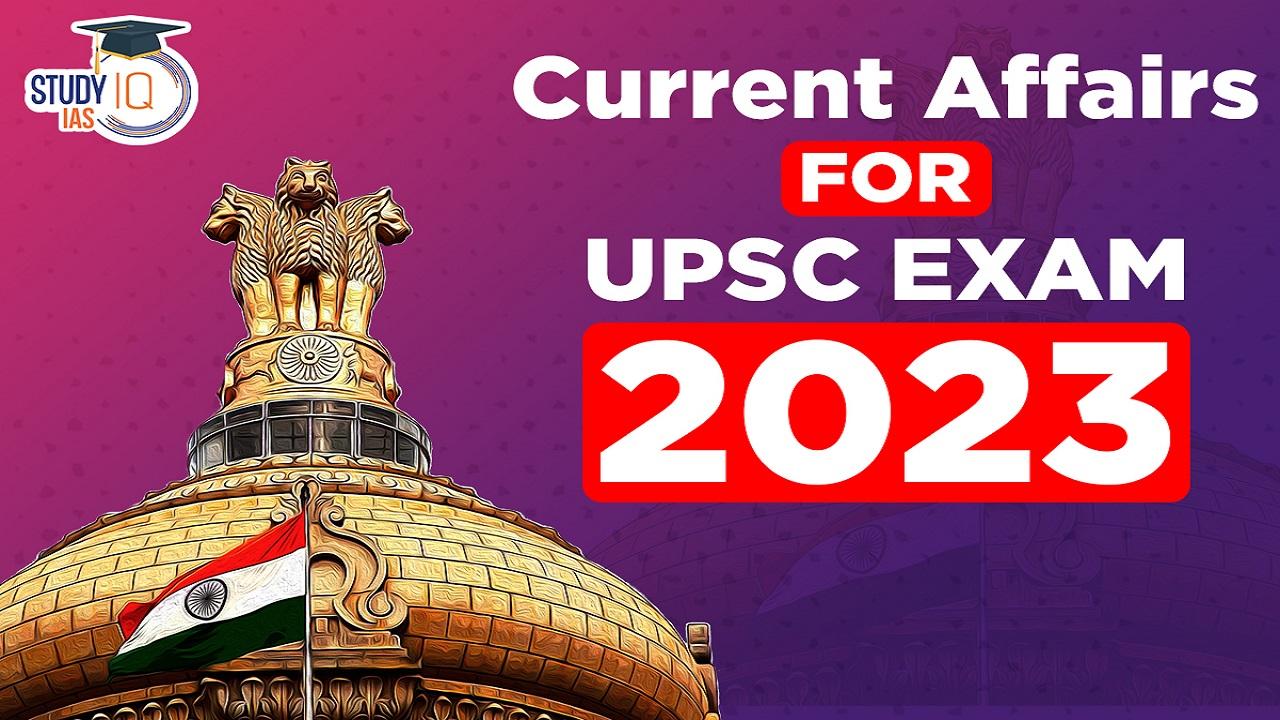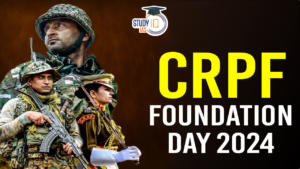Current Affairs 25th August 2023 for UPSC Prelims Exam
Chandrayaan Mission Experiments
Context: ISRO’s third lunar mission Chandrayaan-3 made a historic soft landing on the Moon recently.
- This made India the first ever country to land a rover near the Moon’s South Pole and the fourth nation to land a rover on the lunar surface after the US, Russia and China.
About Chandrayaan Mission
- The Chandrayaan-3 lander, the six-wheel 26-kg rover, which is capable of slowly moving up to 500 metres, will begin its lunar exploration.
- The landing has happened at lunar dawn, and the six payloads on board the lander and rover will start collecting data in the single lunar day or 14 Earth days for which they will remain operable.
- The Chandrayaan-3 payloads will improve the science learnings of the two predecessor missions by studying lunar quakes, mineral compositions, and the electrons and ions near the surface of the Moon.
- The mission will attempt to study water-ice, the presence of which was detected by Chandrayaan-1.

Chandrayaan Mission Experiments
The lander has four experiments on board:
- Study of Electrons and Ions: The Radio Anatomy of Moon Bound Hypersensitive ionosphere and Atmosphere (RAMBHA) will study the electrons and ions near the surface of the moon and how they change over time.
- Study of Thermal Properties: The Chandra’s Surface Thermo physical Experiment (ChaSTE) will study the thermal properties of the lunar surface near the polar region.
- Chandrayaan-3 has landed around 70-degree south latitude, the closest that any spacecraft has reached to the lunar south pole.
- Study of Composition of the Moon’s Crust: The Instrument for Lunar Seismic Activity (ILSA) will measure the lunar quakes near the landing site and study the composition of the Moon’s crust and mantle.
- Study of Chemical and Mineral Composition: There are two scientific experiments on the rover.
- The LASER Induced Breakdown Spectroscope (LIBS) will determine the chemical and mineral composition of the lunar surface.
- The Alpha Particle X-ray Spectrometer (APXS) will determine the composition of elements such as magnesium, aluminum, silicon, potassium, calcium, titanium, and iron in the lunar soil and rocks.
Current Affairs 24th August 2023 for UPSC Prelims Exam
The Concept of ‘One Health’
Context: The concept of ‘One Health’ is currently gaining popularity both nationally and Internationally.
About One Health
- Definition: One Health is a holistic approach to problems that recognizes the interconnections between the health of humans, animals, plants, and their shared environment.
- An early articulation of this concept can be found in the writings of Hippocrates (460-367 BC), who contemplated the relationships between public health and clean environments.
- The COVID-19 pandemic of 2020-2023 highlighted the importance of adopting a One Health approach. Since COVID-19, many interventions based on the One Health model have been launched worldwide.
- Need: Human population growth, urbanization, and industrialization have increased the damage to biodiversity and ecosystems.
- These harmful environmental changes are linked to zoonoses – diseases shared between animals and humans.
- Researchers have estimated that 60% of emerging diseases that can infect humans are zoonotic in nature. They include bird flu, Ebola, rabies, and Japanese encephalitis.
- In addition, humankind has also become beset by major issues of antimicrobial resistance, food safety and security, and the control of vector-borne diseases.
- One Health minimizes resource requirements across sectors.
- An important way it does this is by encouraging coordination across governmental units, including the Ministries of Health and Family Welfare, Fisheries, Animal Husbandry and Dairying, Environment, and Science and Technology.
- Taking a One Health approach allows researchers to, for example, share their laboratories and findings, and ultimately make decisions that lead to resilient, sustainable, and predictable policies.
- The economic benefits of One Health are understood in contrast to the cost of managing a pandemic with a non-One-Health approach.
- An assessment of the G20 Joint Finance and Health Taskforce estimated the non-One-Health approach to be around $30 billion a year.
- Estimates by the World Bank have indicated that the One Health approach would cost $10.3 billion to $11.5 billion annually.
- These harmful environmental changes are linked to zoonoses – diseases shared between animals and humans.

Recent One Health Initiatives:
- The Government of India established its ‘Standing Committee on Zoonoses’ in 2006 under the Ministry of Health and Family Welfare (MoHFW) to provide the Union and the State governments guidance and recommendations on challenges related to zoonoses.
- The Department of Biotechnology launched India’s first consortium on One Health in October 2021 that brings together 27 organisations from several ministries and plans to assess the burden of five transboundary animal diseases and 10 select zoonotic diseases.
- Department of Animal Husbandry and Dairy (DAHD) – in partnership with the Bill & Melinda Gates Foundation and the Confederation of Indian Industry – launched a One Health pilot project in Karnataka and Uttarakhand to improve livestock health, human health, wildlife health, and environmental health.
- India is also currently preparing for a wider ‘National One Health Mission’ to coordinate, support and integrate all existing One Health initiatives in the country.
The One Health Approach Process:
- Stage 1: Communication: Basic mechanisms for communication between various ministries and/or sectors are set up.
- An example of this stage is the National Standing Committee on Zoonoses under the MoHFW.
- Stage 2: Collaboration: After initiating communication between the relevant sectors, sector members need to exchange their knowledge and expertise to translate ideas into short-term interventions.
- For example, DAHD’s One Health pilot project in Karnataka and Uttarakhand.
- Stage 3: Coordination: The activities carried out during this stage are usually routine and long-term. Initiatives to achieve One Health in this stage are spearheaded by a national or a subnational agency.
- For example, India’s forthcoming ‘National One Health Mission’.
- Stage 4: Integration: Policy framework that helps the relevant sectors to efficiently share resources and streamline their current programmes is essential in this stage.
- For example, India’s national and subnational programmes – such as MoHFW’s Integrated Disease Surveillance Programme and DAHD’s Livestock Health and Disease Control scheme – are currently not integrated with other sectors, resulting in uncoordinated, ad hoc initiatives.
Astra Missile
Context: India’s Tejas fighter aircraft has successfully test-fired indigenous Astra missile.
About Astra Missile
- It is an indigenous Beyond Visual Range (BVR) air-to-air missile.
- It is to engage and destroy highly manoeuvering supersonic aerial targets.
- It is designed and developed by the Defence Research and Development Laboratory (DRDL), Research Centre Imarat (RCI) and other laboratories of DRDO.
- The indigenous Astra BVR firing from homegrown Tejas fighters is a major step towards ‘Aatmanirbhar Bharat’.

About LCA Tejas
- It is the lightest, smallest and tailless multi-role supersonic fighter aircraft in its class.
- This aircraft is designed to carry a range of air-to-air, air-to-surface, precision-guided weapons.
- It has the air-to-air refuelling capability.
- The maximum payload capacity of Tejas is 4000 kg.
- Speed: Mach 1.8.
Members of Parliament Local Area Development Scheme
Context: As per Data, a major chunk of Members of Parliament Local Area Development Scheme was spent on civic infrastructure and surveillance in Hyderabad and Secunderabad.
About Members of Parliament Local Area Development Scheme (MPLADS)
- Definition: The Members of Parliament Local Area Development Scheme (MPLADS) is an ongoing Central Sector Scheme which was launched in 1993-94.
- Aim: The Scheme enables the Members of Parliament to recommend works for creation of durable community assets based on locally felt needs to be taken up in their constituencies in the area of national priorities namely drinking water, education, public health, sanitation, roads etc.
- Recommendation:
- The Rajya Sabha Members of Parliament can recommend works in one or more districts in the State from where he/she has been elected.
- The Nominated Members of the Lok Sabha and Rajya Sabha may select any one or more Districts from any one State in the Country for implementation of their choice of work under the scheme.
- Sanction: MPs can only recommend for works to the tune of Rs.5 Crores per annum to be taken up in his/her constituency but District Authorities have the ultimate power to sanction it.
- Ministry: The Ministry of Statistics and Programme Implementation has been responsible for the policy formulation, release of funds and prescribing monitoring mechanism for implementation of the Scheme.
- Focus Areas:
- Key priority sectors:
- Drinking water facility,
- Education,
- Electricity facility,
- Non-conventional energy resources,
- Healthcare and sanitation,
- Irrigation facilities,
- Railways, roads, pathways and bridges,
- Sports, agriculture and allied activities,
- Self-help group development, urban development.
- Works not permitted:
- Construction of office and residential buildings for public and private agencies,
- Land acquisition or paying compensation,
- Naming assets after individuals,
- Grants or loans to state/central relief fund,
- Assets for individual benefits,
- Works on lands belonging to religious groups,
- Execution of works in unauthorized colonies.
- Key priority sectors:
Right to Information
Context: Right to Information activists recently noticed that the records of their previous applications had disappeared in the hundreds from the RTI Online portal.
About Right to Information
- Definition: The Right to Information (RTI) is an act of the Parliament of India which sets out the rules and procedures regarding citizens’ right to information.
- It replaced the former Freedom of Information Act, 2002.
- Aim:
- To empower the citizens, promote transparency and accountability in the working of the Government,
- Contain corruption and make our democracy work for the people in real sense.
- Constitutional Provisions: Although Right to Information is not included as a Fundamental Right in the Constitution of India, it protects the fundamental rights to Freedom of Expression and Speech under Article 19(1)(a) and Right to Life and Personal Liberty under Article 21 guaranteed by the Constitution.
- Key Provisions of RTI Act:
- Section 4 of the RTI Act requires suo motu disclosure of information by each public authority.
- Section 8 (1) mentions exemptions against furnishing information under RTI Act.
- Section 8 (2) provides for disclosure of information exempted under Official Secrets Act, 1923 if larger public interest is served.
- Process:
- Under the provisions of RTI Act, any citizen of India may request information from a “public authority” (a body of Government or “instrumentality of State”) which is required to reply within thirty days.
- In case of matter involving a petitioner’s life and liberty, the information has to be provided within 48 hours.
- The Act also requires every public authority to computerize their records for wide dissemination.
- The Public Information Officer (PIO) or the First Appellate Authority in the public authorities perform quasi- judicial function of deciding on the application and appeal respectively.


 CRPF Foundation Day 2024, Raising Day, A...
CRPF Foundation Day 2024, Raising Day, A...
 Current Affairs 26th July 2024 for UPSC ...
Current Affairs 26th July 2024 for UPSC ...
 APJ Abdul Kalam Death Anniversary 2024, ...
APJ Abdul Kalam Death Anniversary 2024, ...

















